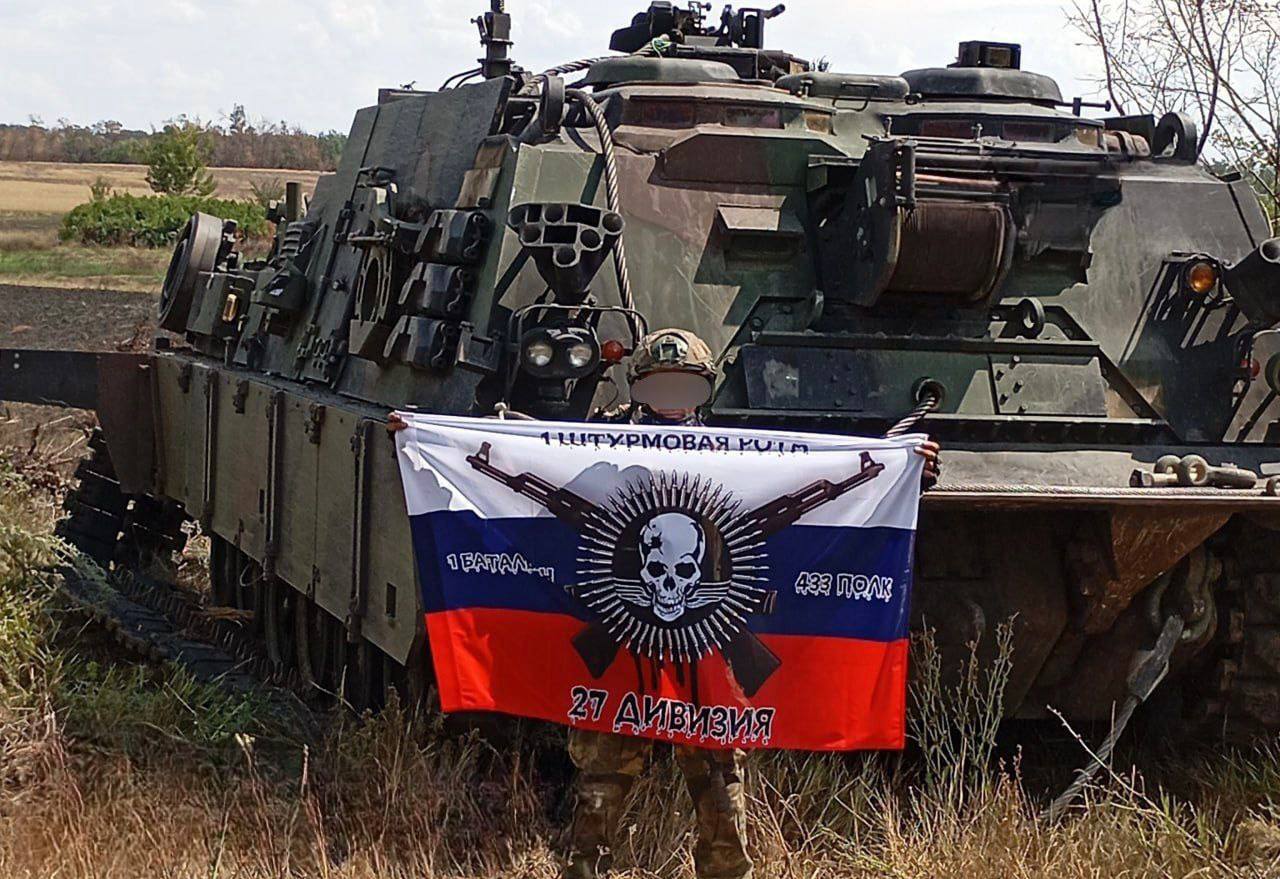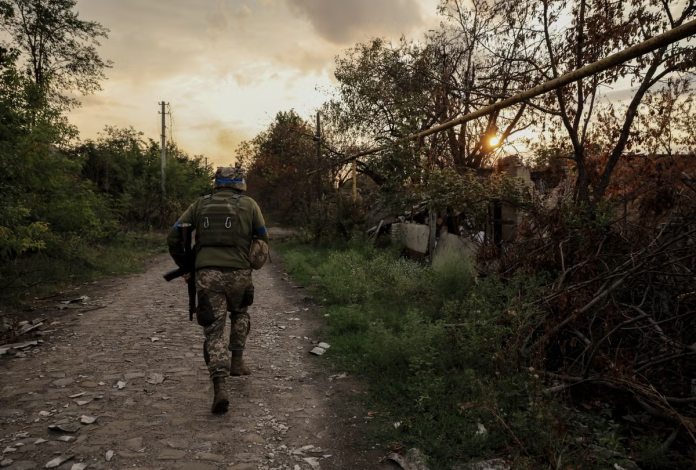Media report various scenarios of the Ukrainian troops’ raid in the Kursk region, with Kyiv’s allies evading any responsibility for the operation, while Russians demand to intensify the offensive and “push” Ukraine to end the conflict.
Due to the constantly changing situation on the advance of Ukrainian troops and their dislodging from certain positions near the Russian border in the Kursk region, reliable information from the scene is extremely scarce.
Nevertheless, at the moment it seems that the rapid breakthrough of the Armed Forces of Ukraine (AFU) has slowed down.
In the central direction of their strike, the Ukrainian forces managed to gain a foothold in the vicinity of Sudzha and capture at least some areas of the town. However, data from various sources still vary. North of Sudzha, the AFU reached the Rylsk-Korenevo-Sudzha Road and approached the village of Korenevo. According to local sources, the village itself remains uncaptured.
It is reported that by the second night, the Ukrainians were actively seizing landings in their zone of control and pulling up reserves. By the morning of the third day of the surprise offensive, they will have to introduce major additional reserves or start entrenching themselves in the positions they have already taken, as the Russian forces have already pulled in their units. According to local sources, Russian troops are inflicting a firestorm on the breakthrough AFU units.
Experts believe that with such a configuration of forces and means, the AFU’s plans to reach Kurchatov NPP and take it under control can hardly be called realistic. In the autumn of 2022, Ukrainian forces managed to find a weak point in the Russian defence in the Kharkiv region, but taking Kurchatov requires control not only over Sudzha, but also Rylsk. The latter is far north of Korenevo, which Ukrainian soldiers also failed to take.
Moreover, the AFU would have to march 50 kilometres from each of these towns in the direction of Kurchatov. With Russian border troops and other soldiers as support, such a manoeuvre by the AFU would require a full-fledged army corps, not the few brigades involved in the operation at the Kursk border.
Meanwhile, footage allegedly recording war crimes on the part of the AFU is surfacing online. It is reported that the crew of a Stryker Armoured Personnel Carrier (APC) – a vehicle in service with the 22nd Brigade of the AFU – shot at a civilian car in the border village of Zelenyi Shlyakh, near Sudzha. The incident was caught on the lens of a reconnaissance drone.
As a result of the hits, the car rolled to the roadside and burst into flames, with everyone in the car perished.
Russian media also publish footage of how veterans of the Wagner Group are being transferred to the Kursk region as part of units of the Defence Ministry. Russian troops reportedly plan to deploy the Ratibor group and the Aida group of the Akhmat Special Forces, mostly consisting of Wagner veterans.
AFU collapse in Donbas continues
In the Siverskyi section, Russian troops are reported to be advancing along the river near Bilohorivka, with reports of activity near Pereizne indicating an advance towards the southern outskirts of the village. The AFU reportedly retreated from Serhiivka in the strategically important Pokrovsk area.

Ukrainian media also reported the loss of control over Zhelanne. According to Ukrainian data, the Russian forces advanced in the village of Ivanivka, taking almost the entire village, leaving no more than half a kilometre to Hrodivka, which is operationally important for the Ukrainian forces.
The AFU also retreated near Toretsk to avoid encirclement, military analyst Julian Röpcke reported. Russian forces had bypassed the centre of Niu-York (formerly Novhorodske, Donetsk region) and were advancing towards its northwestern part, he said. Ukrainian forces withdrew from the city to avoid being surrounded.
Earlier, The New York Times reported that soldiers of the 41st Mechanised Brigade of the AFU, transferred to the defence of Toretsk in the Donetsk region, had lost their positions due to the incompetence of the military leadership. The brigade reportedly “suffered heavy losses” following offensive orders, with soldiers unable to stabilise the situation due to shortages in manpower.
According to the Financial Times, the Russian army regained more territory in six months than Ukraine managed to seize during the counter-offensive in 2023. According to analysts, the Ukrainian party has recently suffered significant losses, giving strategically important points to the Russian military. They call staff shortages the main reason for the AFU’s failures.
It is reported that between 3 May and 2 August the Russians seized some 592 square kilometres. At the same time, Ukrainian forces are losing precious forces in a dubious venture in the Kursk region. The following video shows the shelling at AFU assault vehicles near the village of Sverdlikovo, 3 kilometres from the front line with Ukraine, with Russian barrage munitions.
Strengthening positions ahead of talks
A representative of Ukrainian President Volodymyr Zelensky’s office, Mykhailo Podolyak, said that the country launched an offensive in the Kursk region in order to strengthen its negotiating positions. According to him, Russia’s loss of territory, forces, and equipment would have a positive impact on the talks.
Are they reacting to anything other than fear? No, we need to finally realise this. Russia perceives any compromise as your weakness and readiness to kneel down before it. When they can sit at the negotiating table and you can still get something, you get something only if they realise that the war is not going according to their scenario.
Earlier, Spokesperson for the US Department of State Matthew Miller stated that Ukraine’s actions in the Kursk region were a sovereign decision by Kyiv, according to Wednesday’s Press Briefing.
Ultimately, the decisions about how Ukraine conducts its military operations are decisions that Ukraine makes. Nothing has changed about our policy with respect to strikes across the border. (…) I will let Ukraine speak to its operations.
The chairman of the Bundestag defence committee, Marcus Faber, said that he did not see a problem with Ukraine using German tanks on Russian territory. Once the equipment is handed over to Kyiv, it becomes Ukrainian weaponry, Faber added.
I don’t see a problem in Ukraine being able to use German tanks on Russian territory.
Interim result
With some Russian gas transiting to Europe via Ukraine, gas prices in Europe at the start of the trading session hit their highest level this year, according to Bloomberg. September TTF futures opened trading at $439.3 (+1.2%) per thousand cubic metres, hitting their highest since December.
On 7 August, Russian President Vladimir Putin accepted a report on the situation in the Kursk region. Valery Gerasimov, head of the Russian Armed Forces General Staff, reported to him that the advance of the AFU deep into Russia in the Kursk region had been stopped by the forces of the North group of troops and the Federal Security Service. Putin, for his part, called Kyiv’s actions a “provocation.”
From a military point of view, Ukraine has chosen the optimal direction, since it is difficult to break through permanent battle positions. However, this also works against the AFU: failing to gain a foothold and establish a defence, they risk not being able to hold the bridgehead. Moreover, experts suggest that the dubious success of the Ukrainian troops in the Kursk region is unlikely to raise the morale of Ukrainian units in Donbas (Luhansk and Donetsk regions), which are experiencing an active assault by Russian soldiers.
Whoever ordered the raid apparently did not take into account Ukraine’s most pressing issue: the lack of well-trained infantry. This is a consequence of Ukraine’s failure to mobilise in a timely manner, experts say. Joni Askola, a Finnish analyst, writes:
The enactment of Ukraine’s mobilisation law was significantly delayed, and the mobilisation of men has been insufficient. Ukraine could have strengthened its position on the front lines earlier, reducing territorial losses by mobilizing more troops, an undeniable reality. Additionally, there are infantry shortages in many units, and Ukraine lacks units at the front and in reserve.
Meanwhile, Russian citizens are outraged by the events at the Kursk border and are increasingly vocal in their demand for an active offensive against Ukraine. Deputy Chairman of the Security Council of Russia, Dmitry Medvedev, called for an offensive “all the way to Odesa, Kharkiv, Dnipro, Mykolaiv, Kyiv, and beyond”. According to him, after the AFU attack on the Kursk region, “there should be no restrictions in the sense of some borders recognised by someone” for Ukraine.
